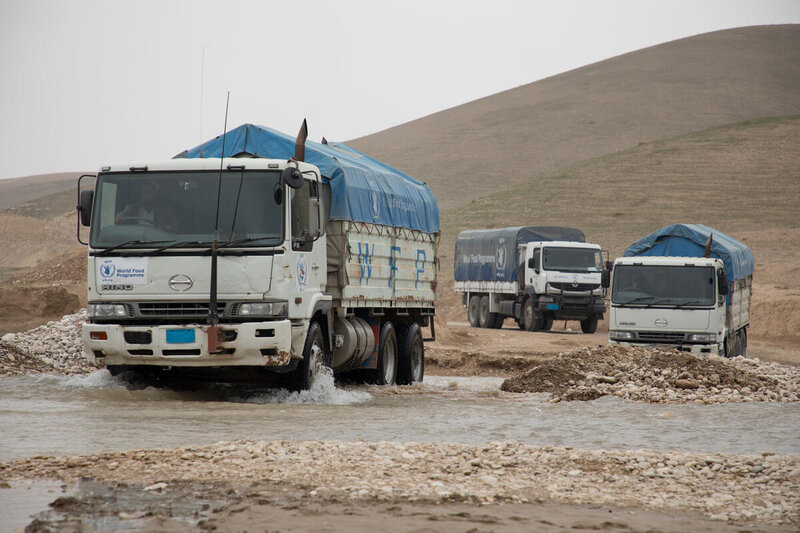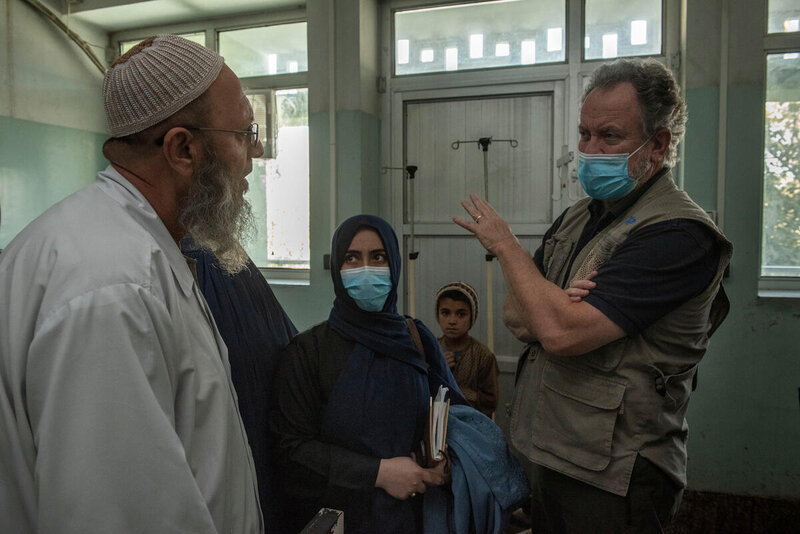‘Our presence is hope’: Call for US$2.6bn as winter spells hunger for Afghanistan
“This is a race against time – I am worried we might not be able to keep up,” says Shelley Thakral, the World Food Programme’s communications chief in Afghanistan, on a video call from Herat.
“We do not have enough funds and we are asking for US$2.6 billion to scale up as we must in 2022 – that’s about 30 cents of a US dollar per person we need to reach per day. We’re currently nowhere close to this.”
As the country reels from a devastating drought and years of conflict, the economy is in free fall and the harsh winter is reaching its peak.
Around 23 million people – half the population – are food insecure, with 8.7 million people at risk of starvation. They are at IPC4 – the ‘emergency’ level on the global standard for measuring food insecurity, only one step away from ‘catastrophe’.
“There are power cuts every day and families have little or no money for food and fuel,” says Thakral. “Mothers tell us they are forced to decide who gets to eat and who doesn’t – often they themselves will miss meals to make sure there is something for their children.”
Photo: WFP/Sadeq Naseri
With construction, like so many other industries, at a standstill, there are few casual labour opportunities and people are resorting to selling their personal possessions – second-hand markets are full of such items, including furniture.
“The economic crisis has affected a population that was already fragile, people who were really struggling with putting food on the table,” says Dr Qadir Assemy, WFP’s head of office in Herat.
What WFP is doing
“You see long queues of people trying to flee to neighbouring countries. I'm sitting an hour from the Iran border. Many people want to go there for casual labour only to send some food back home.”
So, what is WFP doing about this?
“We work with our partners, like NGOs who are conducting assessments to identify the most vulnerable populations, we plan food distribution, cash distribution, [and how to secure access to] nutritious food for malnourished children and pregnant and breastfeeding women,” says Assemy.
Then there are long-term development activities that WFP remains committed to, from building roads and bridges to empowering people with training.
WFP is working across the country to scale up its school meals programme and plans to reach 1 million children in 2022.
We are also supporting training for women in tailoring and handicrafts, gardening, carpet weaving and even repairing mobile phones. “Our plan is to support a million people in 2022 through such projects,” says Thakral.

WFP’s has a well-oiled a fleet of 171 trucks that manage to transport food across all of Afghanistan’s 34 provinces.
However, “the most important element is missing,” says Assemy – funds to make sure WFP can scale up as it must in 2022.
“It’s like the engine for a car – when you have the engine, you will find the tyres,” he says.
Signs of hope
“Every dollar we cannot raise means a child, a mother will go hungry, and someone is forced to choose who gets food and who doesn’t. If our efforts are supported, we can avoid the worst-case scenario come spring. But we don’t have a minute to waste.”
Assemy, a trained physician, adds: “I haven’t seen anything this bad in my life, and I’ve worked with humanitarian organizations on and off for the last 20 years.”
Is there any sign of hope, I ask.
“Our presence is hope,” he says. “I’d like to thank donors for being generous this time around.” However, he says, “sadly, it is barely enough.”
A hallmark of the current crisis is how it is affecting middle class people in urban centres. With salaries unpaid and many, especially women, forced out of their jobs, people’s savings are being depleted, inching them closer to the brink.
For the first time this urban class of hungry people – from civil servants to teachers – are now standing in line for food and cash assistance.
WFP and partners make ongoing household assessments of who needs emergency food supplies – this activity is growing as more and more people who used to have incomes now have nothing.
Assemy says people from all walks of life approach him for help in the street – from university professors to people who hang around markets in the hope that someone might buy them a loaf of bread.

“Everybody's asking for some sort of assistance,” he says. “And we cannot really help everybody.”
On a personal level, this is a challenge. “You know, it involves a lot of emotions,” he says. “It’s beyond the capacity of a human being to listen to all these stories and requests and then relax again.”
Thakral says the sad reality is, “We can’t say, ‘It’s going to be okay, you’ll have a job tomorrow’ – there are no jobs”.
She adds: “It can be incredibly overwhelming coming to these [distribution] sites for the first time and there are so many questions people have: how much food will I get, is it enough, when will I receive the next round.
“There are some people who just need to tell you what they are going through. They also need to let the world know that the economic sanctions are destroying them.”
